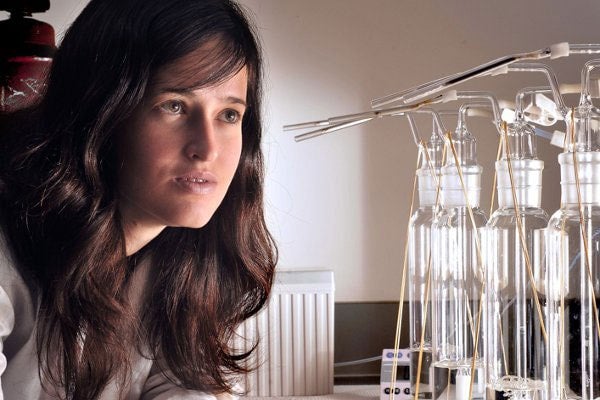
Diving deep into urban wetlands
Published: April 10, 2013
Rachel Strickman is fascinated by artificial wetlands. A PhD candidate in environmental science at the University of Toronto Scarborough, Strickman studies the biogeochemistry of manmade ponds and marshes that most city-dwellers just zoom right past.
If designed and managed properly, artificial wetlands can contribute to the overall health of regional ecosystems. But these small catchments do have a dark side, and this is where Strickman's research comes in. Her doctoral thesis examines the mechanisms by which inorganic mercury is converted to highly toxic methylmercury in wetland systems.
"Mercury methylation happens naturally in many kinds of wetlands, but we don’t know much about this process in constructed sites," says Strickman, whose thesis advisor is UTSC Environmental Science Professor Carl Mitchell. "So far we only have a small baseline sense of how prevalent a problem this is. I’m interested in learning more so we can better balance the risk/benefit equation."
Elemental mercury by itself is dangerous, but not easily absorbed by living organisms. But when consumed by certain aquatic bacteria—many of which are found in the root systems of wetland plants—mercury is converted to the highly toxic form methylmercury. Methylmercury accumulates through the food chain and can have terrible effects on humans, ranging from subtle cognitive and behavioural deficits to severe neurological impairment. According to a 2003 paper in Environmental Health Perspectives, up to 100,000 babies born in the USA each year suffer the impacts of methylmercury exposure.
"We know that mercury is methylated in these environments and in some sites very intensely," says Strickman, who focuses on the role of plant communities in the process. "By studying a wide variety of wetland areas in different geographic areas, I hope to improve our understanding of the factors that contribute to the phenomena."
Strickman has study sites in nearby Rouge Park, in Brampton and in Washington D.C. She plans to expand her geographic coverage to include a north-south gradient, which will enable her to explore the potential effects of climate change on mercury methylation. Strickman is not looking for mercury hotspots, however; she is studying ambient levels of naturally occurring mercury and doesn't expect to find examples of serious mercury contamination.
A plant biologist by training and a winner of a prestigious Ontario Trillium Scholarship in 2011, Strickman is originally from California. She has worked in New Zealand and received her bachelor’s degree for work on lichen ecology at the University of St. Andrew's in Scotland before moving to Finland to pursue a master’s in plant ecology. Strickman was attracted to UTSC for many reasons.
"UTSC has such proximity to fantastic wetland research sites such as Highland Creek, Lake Ontario and Rouge Park. I have access to top-notch analytical facilities and high-end technology that is very precise and well maintained," says Strickman. "The U of T library system is an excellent resource and Professor Mitchell is a really great guy to work with. He's open to new ideas, very supportive and a good advisor."
Strickman says she hopes her work will contribute to the development of better wetland management policy, since constructed wetlands already bring so many esthetic, recreational and ecological benefits to many communities.
"If we understand mercury methylation in artificial wetlands, we may be able to do something about it," she says. "I'm a practical person, and I want to know that what I'm working on has a practical impact on the world."



